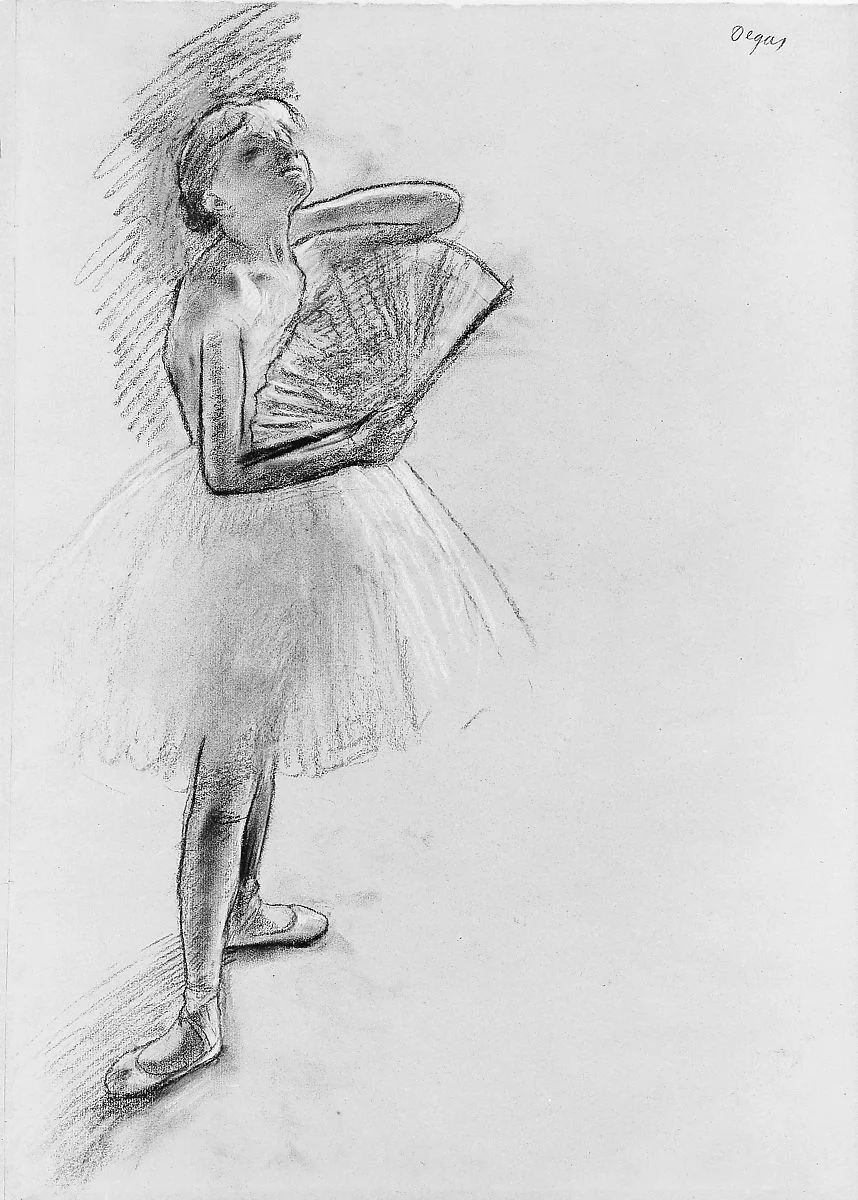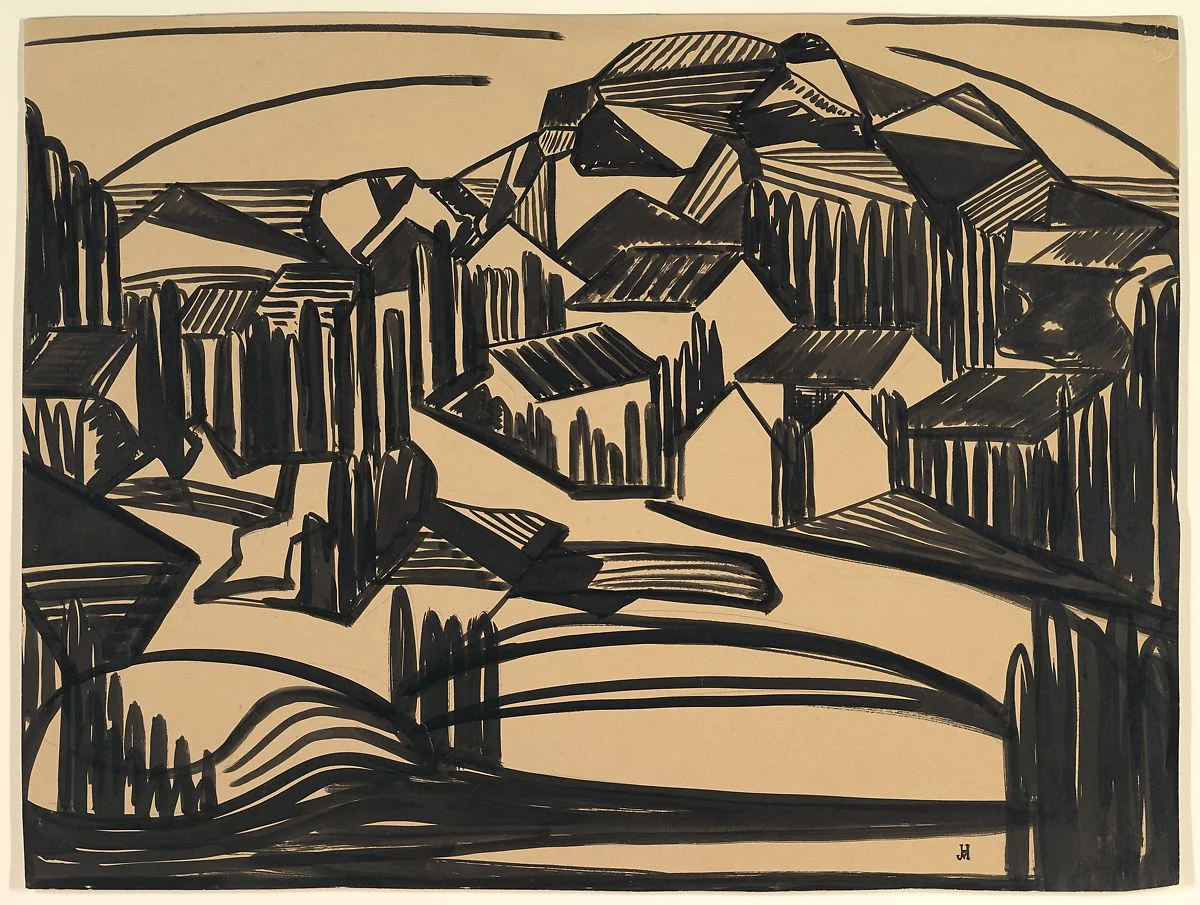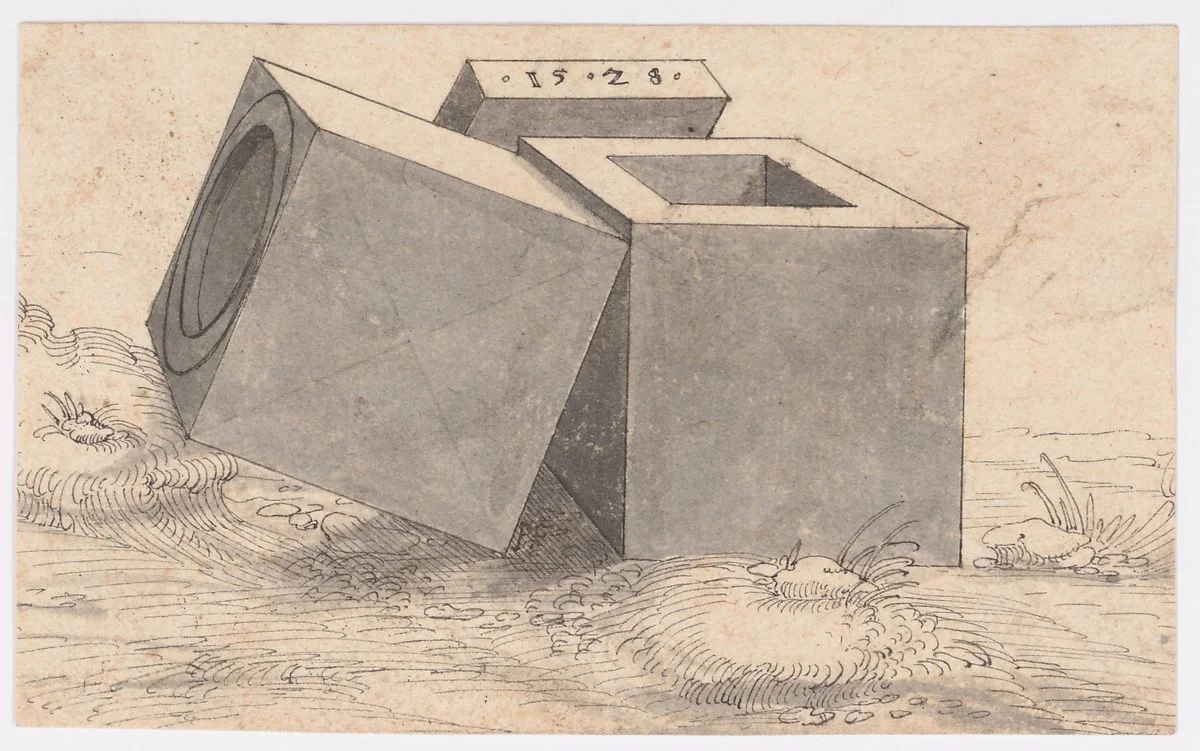VALUE
the lightness or darkness of a color
Value
The lightness or darkness of a color.
Click the link below to watch a short video on chiaroscuro.
Above is the classic example of a value scale. The image shows the potential range of values needed to create an image that appears photographic or real. If you were to use the two extremes of the scale (1+2 with 9+10), you would get a work that has high contrast and a high attraction value. If you begin to bring in some of the middle tones (4+5+6) it can soften the image, making it richer.
There are many different ways to create various tones or values. When we consider figure-ground relationships, we may see either dark or light areas come forward or recede. Depending on how an artwork is constructed, a darker value may recede in space while a lighter value comes forward. Or, a dark object may come forward while a light surrounding area recedes in space. Being aware of the power of value to create emphasis and lead the eye around the composition is what is ultimately important.
Above is a example of how values function to create three dimensional looking forms in a two dimensional space. Historically academic artists would learn how to model by adding value, light and dark shading, to squares, cylinders, cones, and spheres, since these shapes where thought to be simplified abstractions of more complex shapes. If one could shade these shapes well, one could shade anything well by breaking the complex object into these simplified shapes.
Notice in the drawing above how the values create a sense of depth where the darker tones recede in space while the lighter come forward.
In this drawing the light and dark values are all the same, meaning there is one very dark value in contrast to one much lighter value. This creates a high contrast image that demands our attention but is flat.
The alternating values in this work help the viewer see deeply into the center and back of the interior space. A splash of light value in the middle ground is a great way to help the viewer be interested in looking down the corridor and into the background.
In this drawing the values on these geometric forms help to define the various planes that make up these shapes. By shifting the value slightly we read one edge of the cube as receding in space while another comes forward.
This drawing is called a value study. It is used by an artist to roughly lay out the dark and light areas that establish the space in a composition. Though this work was considered a study when it was made, now we view these pen and ink wash drawings as complete, and appreciate their provisional beauty.
Edgar Degas. Dancer with a Fan. ca. 1880. Pastel on gray-green laid paper. French. The Metropolitan Museum of Art.
Jean Honoré Fragonard. A Gathering at Wood's Edge. ca. 1770–73. Red chalk. French. The Metropolitan Museum of Art.
Jacoba van Heemskerck. Drawing 16. ca. 1916. Brush and ink on paper. Dutch. The Metropolitan Museum of Art.
Friedrich Hohe. Stella in Prison. after 1810. Lithograph. German. The Metropolitan Museum of Art.
Peter Flötner. Perspectival Drawing with Three Cubes. ce. 1528. Pen and black ink, brush and grey wash. German. The Metropolitan Museum of Art.
Augustin Pajou. Le Grand Pénitencier. n.d. Black chalk, pen and gray wash. French. The Metropolitan Museum of Art.









